
The environmental footprint of the health care sector
Health care is one of the most important economic sectors in high income countries, but its environmental footprint is underreported and not often considered. Most research into sustainable health care is less than five years old. A 2019 research paper calculated that the sector accounts for 2-10% of national carbon footprints across all OECD countries, China, and India, with an average share of 5.5% overall. 1 2
The data refer to the year 2014, when the health care sectors of all these 36 countries combined were responsible for 1.6 Gt of greenhouse gas emissions. This corresponds to 4.4% of the global total emissions that year (35.7 Gt) – almost double the share of aviation. The US has the most carbon-intensive health care system, accounting for up to 10% of national carbon emissions. 3 It also produces 9% of national air pollution, 12% of acid rain, and 10% of smog formation nationally.
The environmental footprint of health care keeps increasing. For example, in the US, the health care sector’s greenhouse gas emissions grew by 30% between 2003 and 2013. 3 The rise in emissions couples an increase in spending – in fact, the emissions are often calculated based on spending. US national health expenditures as a percentage of Gross Domestic Product (GDP) increased from 3% in 1930, to 5% in 1960, to 10% in 1983, to 15% in 2002, and to 17.7% in 2019. 4 5 In the EU, health care spending per capita more than doubled between 2000 and 2018, and total spending is now at 9.9% of GDP. 6
If the whole world would copy today’s US health care system, the global carbon footprint of the health care sector would amount to almost half of total emissions worldwide in 2014.
The 36 countries whose health care systems together cause 4.4% of global emissions only have 54% of the worldwide population. The remaining 46% of the population produces little or no health care related emissions because they don’t have access to health care. If we were to extend the OECD-China-India health care system globally, emissions would double to about 8% of the worldwide total. Furthermore, there are very large differences between these 36 countries. If the whole world were to copy the US health care system, the global carbon footprint of the health care sector would amount to around 16 Gt – almost half of total emissions worldwide in 2014.
Intense spotlights, high power medical equipment
What makes modern health care so resource-intensive? 7 To start with, modern hospitals are high energy users, primarily because of large plug loads from medical devices, lighting, ventilation and air-conditioning. 3 8 9 10 11 12 In operating rooms, the high power use is mainly due to the use of intense spotlights and ultra clean ventilation canopies. In intensive care units and diagnostic imaging departments, medical equipment dominates the power load. 9
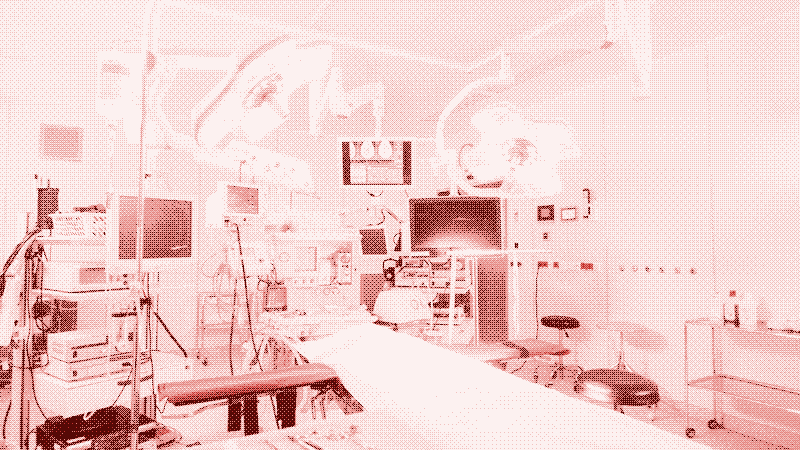
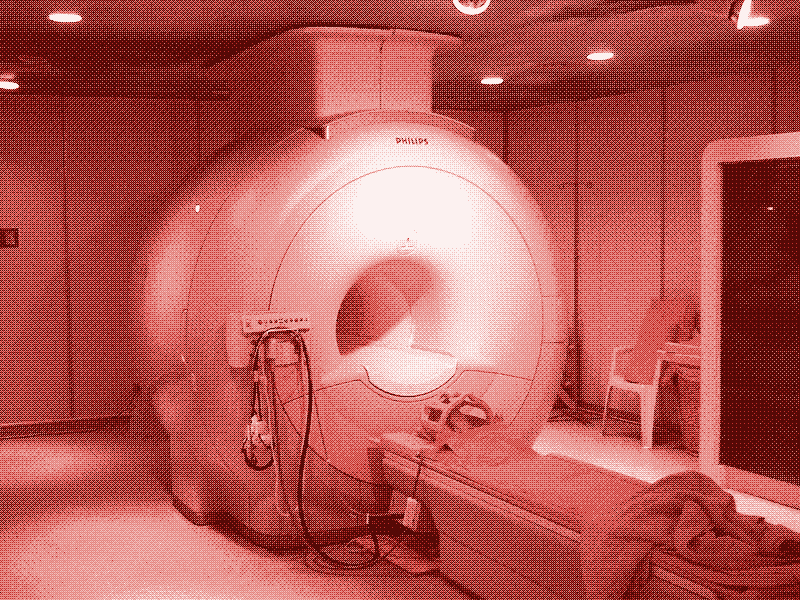
Like so many other sectors in modern society, health care has come to rely on all types of machines and devices. 13 Some of this medical equipment has very high power use. For example, an MRI-scanner, one of the most powerful diagnostic imaging technologies, can use as much electricity as more than 70 average European households. A 2020 study calculated that high-tech medical diagnostic technology (both MRI- and CT-scanners) was responsible for a whopping 0.77% of global carbon emissions in 2016. 14
The power use of smaller medical equipment is poorly researched, but an inventory of two US hospitals showed that they had 14,648 and 7,372 energy using devices, of which the infusion pumps alone consumed more electricity on aggregate than an MRI-scanner. 13 The high density of medical equipment also increases the electricity use of air-conditioning in hospitals. 9
Resource use along the supply chain
Even more energy – around 60% of the total – is used indirectly along the supply chain. 1 3 10 15. This concerns the procurement of medical equipment, pharmaceuticals, and other medical products.
To start with, the growing number of medical devices used in hospitals also needs to be manufactured and brought to market. This requires activities such as the mining of resources and the construction and operation of research laboratories, factories and transport vehicles. This “embodied energy” of the medical equipment supply chain is very poorly researched. A study calculated that the production of an MRI-scanner requires more than half the fossil fuels used in the production of a passenger jet, and that the embodied energy is one third of the total energy use of the machine. 16
Modern health care is also highly dependent on pharmaceuticals, which account for between 10 and 25% of total health care emissions, depending on the country. 15 17 A 2019 study revealed that the global pharmaceutical industry produces more greenhouse gases than the global automotive industry: 52 MtCO2 versus 46 MtCO2. 18 However, there is almost no data about the environmental footprint of specific pharmaceuticals, because corporate secrecy prevents scientists from making life cycle analyses.
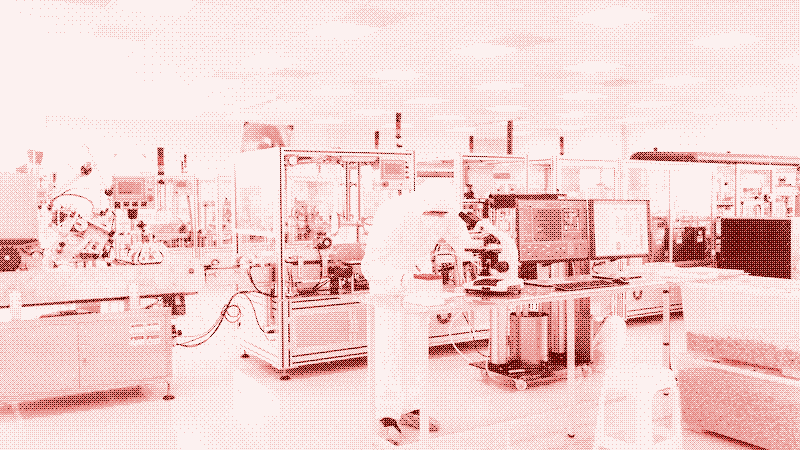
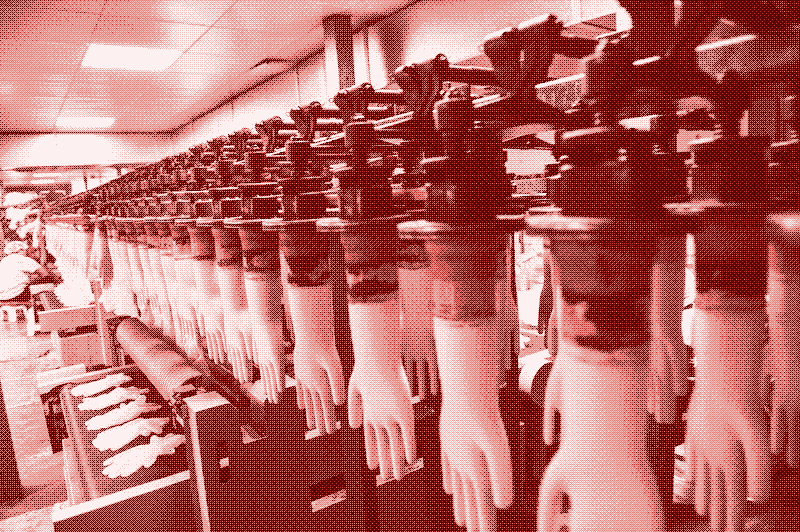
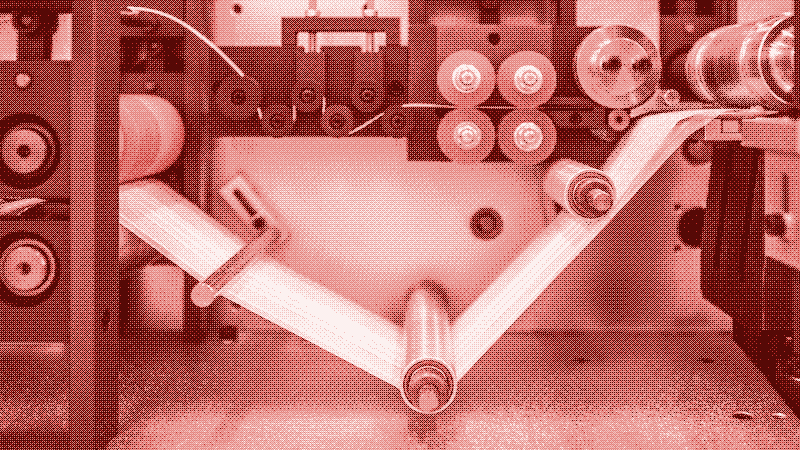
Single-use disposable products are another source of health care energy use and pollution. 19 20 21 22 23 24 These products are worn by medical personnel and patients (face masks, gloves, overshoes, hats, drapes, gowns). Towels, basins, sterile plastic packaging, and utensils such as syringes, laryngoscopic handles and blades, anaesthetic breathing circuits, and even surgical instruments are also provided for single use. These disposable products are supplied to hospitals in so-called custom packs, which are sets of prepackaged sterile products for any specific medical procedure you can imagine. In principle, once a pack is opened, all items are discarded, even if they were not used.
When these practices are questioned, it is often for the hospital waste they create – the average patient in a hospital produces at least 10 kg of waste per day. 25 However, the environmental footprint increases significantly if the embodied energy and waste in the supply chain for making these disposable products is considered too. A study of cataract surgery in the UK – cataracts are the main cause of blindness worldwide – shows that the manufacturing of disposable materials accounts for more than half of the total carbon footprint of the procedure. 26
Anesthetics & Vaccines
Finally, some specialist medical drugs produce emissions too. Inhalation anesthetics, which suppress the central nervous system and are a cornerstone of surgery, are potent greenhouse gases, which evaporate into the atmosphere after they have been inhaled by the patient (vented to the outside through the high energy ventilation systems of modern operating rooms). 27 Maintaining a 70 kg adult anesthetized for an hour produces from 25 kg (using isoflurane) to 60 kg (desflurane) CO2-equivalents, which corresponds to the emissions of driving an average European car (121gCO2/km) for 200-500 km (or driving it for around 4 hours). 15
Pressurized dose inhalers, which are used to treat asthma and chronic obstructive pulmonary disease, also release potent greenhouse gases. Globally, around 800 million pressurized dose inhalers are manufactured annually, with a total carbon footprint that corresponds to the yearly emissions of more than 12 million passenger cars. 17 27 Vaccines are another key element of modern health care. They release carbon emissions not only through their development and production, but also by their resource-intensive distribution, which involves a dedicated cold chain. I could not find any reference to its environmental footprint.
Carbon footprint of medical procedures
Health care services often involve all of the above mentioned sources of emissions: medical devices, pharmaceuticals, and disposable materials. When the emissions in hospitals and along the supply chain are combined, it becomes possible to calculate the environmental footprint of medical procedures.
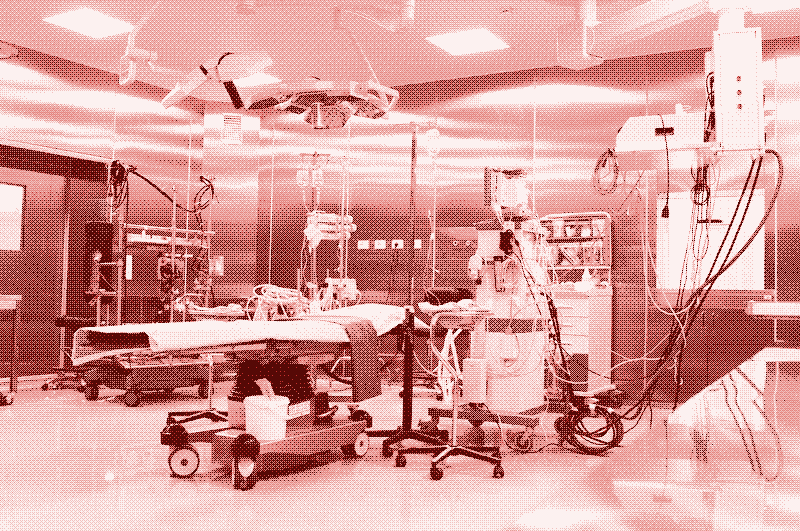
For example, studies of cataract surgery and reflux control surgery in the UK estimated the carbon footprint to be 182 kg and 1 ton of emissions, respectively, which corresponds to between 1,517 km and 8,333 km of driving. 28 29 Renal dialysis, a treatment to replace kidney function, produces 1.8 to 7.2 tonnes of emissions per patient per year, equal to the emissions of 15,000 to 60,000 km of driving. 28 30
The limitations of carbon and energy efficiency
Although data on its environmental footprint is still incomplete, it seems quite clear that modern health care is not compatible with a transition to a low carbon society. The big question is whether or not this can be fixed without lowering the levels of care, pain relief, and longevity that people in high income societies have grown accustomed to.
Many efforts and studies into health care sustainability aim to reduce energy use and emissions without affecting the quality of medical treatments, often explicitly so. For example, the authors of a 2020 study into the Austrian health care system write that it’s “crucial to understand how the health care sector can reduce its emissions without undermining its service quality”. 17 Elsewhere, researchers write that “any solution that would reduce environmental impacts while reducing performance at the same time cannot be deployed”. 31
As a consequence, many researchers tend to focus on improving carbon and energy efficiency. These strategies aim to deliver the same “performance” or “service quality” but with less energy (thanks to more energy efficient equipment), or with less emissions (owing to more renewable energy sources). 32
The quality of medical treatments continues to improve, resulting in extra energy use that erases the carbon or energy savings that result from efficiency.
The problem is that the quality of medical treatments continues to improve, resulting in extra energy use that erases the savings that result from carbon and energy efficiency. For example, in 2012 researchers calculated that MRI-scanners could be made 10-20% more energy efficient with relatively simple changes in design and operation. 31 Some of their proposed changes are now in use, but the energy use of MRI-scanners has not decreased, on the contrary.
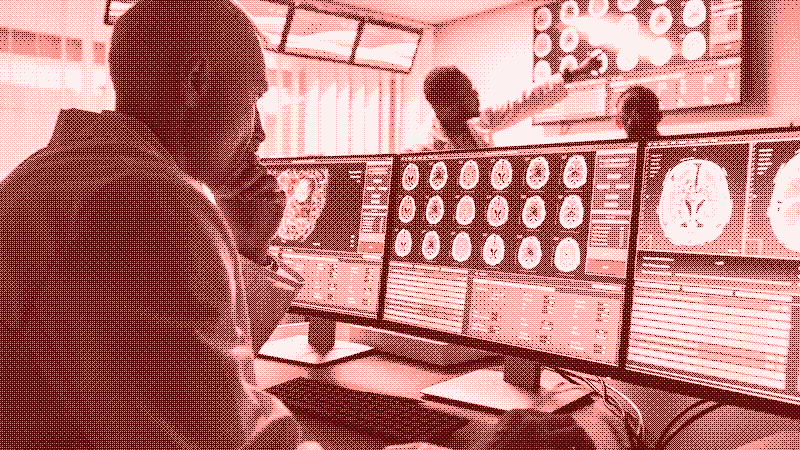
A first reason is that MRI-scanners now come with higher field strengths (which offer diagnostic images of higher accuracy) and with larger boreholes (which improve patient comfort and allow obese or very muscular patients to be scanned). These innovations have improved the quality of care, but they have done so at the expense of extra energy use. In the 2012 study, the average power consumption per scan before the energy efficiency improvements was 15 kWh. A 2020 study measured an energy use of 17 kWh and 23.6 kWh per scan for an MRI-scanner with a field strength of 1.5 and 3 Tesla, respectively. 33
Second, MRI-scanners with better diagnostic capabilities also increase energy use in unexpected ways, because medical equipment, pharmaceuticals, and treatments shape and change each other. 34 For example, doctors used to diagnose a patient through physical examination and communication, and only used diagnostic services to confirm the diagnosis, if necessary. Now, diagnostic tests happen upfront and drive the decision process, resulting in more tests and higher energy use. The introduction of new pharmaceuticals can foster increasingly energy-intensive diagnostic practices, too. For example, certain cancer treatment drugs are now being designed to treat a very specific tumor subtype, which requires more and more accurate medical imaging to identify the tumor subtype. 34
Adding more renewable energy sources could potentially lower the emissions of health care both on-site and throughout the supply chain, but as the energy use of medical treatments continues to increase, this outcome is unlikely. Besides, a quick calculation shows that, even without further growth in energy use, a carbon neutral US health care system would gobble up the entire US renewable energy production – sun, wind, hydroelectric, wood, geothermal, biofuels, and waste. 35 The challenge is only slightly smaller in other high-income countries. Finally, renewable energy would not solve all of the health care sector’s environmental damage, and would not even eliminate all of its carbon emissions.
Sufficient health care?
To reduce the environmental footprint of modern health care, we need to question the trend towards ever greater reliance on energy-intensive technologies and services. The same holds true in other domains of life. 32
However, while some people see the charm and real advantages of frugal and past ways of living when it comes to comfort or convenience, few would be tempted to apply the same principles to health and longevity. After all, the health care equivalent of travelling more slowly or wearing an extra sweater at home may be living a shorter life, suffering more pain, or being less mobile in old age. For example, if we would stop using MRI-scanners, or only use those with a field strength up to 1.5 Tesla, the lower diagnostic accuracy will lead to some cancers not being detected, resulting in lower cancer survival rates, and a lower average life expectancy. Or at least, so it seems.

If health care is viewed in a historical context, it seems clear that there is a powerful connection between the use of energy-intensive medical technologies on the one hand, and the health and longevity of a population on the other hand. Even looking back less than a century shows much lower health outcomes and survival rates for all kinds of diseases, and today’s global average life expectancy (72.6 years) is higher than in any high-income country back in 1950.
Hospitals date back to antiquity, but they merely welcomed those gone mad or awaiting death. In the middle ages, surgery happened at the barbershop, where “barber-surgeons” offered blood-letting, tooth extractions, and amputations alongside the more usual haircuts and shaves. They brew their own anesthetics based on herbs and alcohol, which could be just as deadly as the treatment itself. 36 A look at the “developing” world today also seems to suggest a clear connection between health care emissions, which are very modest, and life expectancy, which can be 20 to 30 years below that in high income countries. 37 38 39 40 41
However, if one digs deeper, the connection between energy use and longevity is not as strong as it seems. This is proven by the USA, which has the most expensive and unsustainable health care system in the world, but ranks behind most European countries on the Health Care Access and Quality Index (which measures death rates from 32 causes of death that could be avoided by effective medical care). US citizens also have a lower life expectancy than European citizens. Clearly, there are other factors at play, too.
Resistance to disease
To start with, the quality of a health care system is not the only determinant of health and longevity. Here’s where history does have an important lesson to teach us. Medical knowledge dating back to antiquity viewed health in a more holistic way and placed great emphasis on building up the body’s inherent resistance to disease. For example, Hippocrates, often referred to as the father of Western medicine, prescribed diet, gymnastics, exercise, massage, hydrotherapy, and swimming in the sea. 42
One could argue that our forebears had no other choice than to focus on preventing disease, because they had few treatments available. However, the wisdom of their approach is more obvious than ever. Nowadays in high income societies, many patients need medical treatment because of so-called lifestyle diseases – those caused by poor or excessive nutrition, lack of physical activity, stress, or substance abuse. Typical health risks are cardiovascular disease, diabetes type 2, depression, obesity, some types of cancers, and higher susceptibility to infectious diseases. Industrial society has given us effective medical treatments, but it’s also making us sick.
This means that health and longevity can be promoted in other ways than through an increasingly resource-intensive health care system. By addressing the broader determinants of health and longevity, we could make a switch from curative to preventive medicine. 15 43 Preventive medicine is not about the government telling us not to smoke (and then cashing in tax money on the sales of cigarettes). Rather, it concerns systemic changes that go beyond behavioural change.

For example, significantly reducing the use of cars in our societies would bring a surprisingly large number of health benefits that would lower the need for energy-intensive medical treatments. It would decrease the health damage done through traffic accidents and through air and noise pollution. It would make people more physically active (preventing many lifestyle diseases), and it would free a lot of public space for people to come together, for kids to play, and for trees to grow (all important factors for the mental health of a population). Finally, reducing the use of cars may easily save more greenhouse gas emissions than the health care system produces.
Switching to a healthier food production system, addressing the environmental damage done by the plastic industry, reducing poverty and social inequality, introducing shorter work hours, and more meaningful jobs are other examples of preventive medicine. We have not achieved the higher life expectancy of today only because of better health care systems. We also got it because of better education, sanitation, safety and traffic regulations, welfare systems, crime control, and a more reliable food supply. The low average life expectancy in poor countries is also partly due to these factors.
Preventive medicine would also reduce the health damage done by the medical treatments themselves. This concerns health damage resulting from medical errors or side effects of pharmaceuticals and more indirectly from the pollution that the health care sector generates. For example, air pollution from health care services contributes to the prevalence of asthma, which in turn increases the demand for health care. Climate change and other environmental damage threaten younger and future generations with even larger health impacts, for example through crop failures, spread of diseases, extreme weather events, and natural disasters. 44
The law of diminishing returns
Second, within a health care system, medical practices with higher energy use do not necessarily lead to increased health outcomes in a proportional way. Like so many other sectors in industrial society, curative health care is vulnerable to the law of diminishing returns: it takes ever more energy to gain ever smaller increases in health outcomes. 5 Conversely, this means that a relatively small decline in the quality or specifications of medical treatments could yield comparably large reductions in resource use and emissions.
Infection control is a good example. The development of general anesthesia in the 1840s made surgery possible, but at the time over 90% of surgical wounds became infected, often leading to death. 45 The first major decrease in infection rates followed antiseptic practices (1880-1900), and the second followed the introduction of antibiotics (1945-1970). By 1985, the overall infection rate had decreased to about 5%. Since then, a lot of resources have been invested to achieve incremental gains towards 100% sterility, mainly by replacing reusable supplies by single-use, disposable products. 26
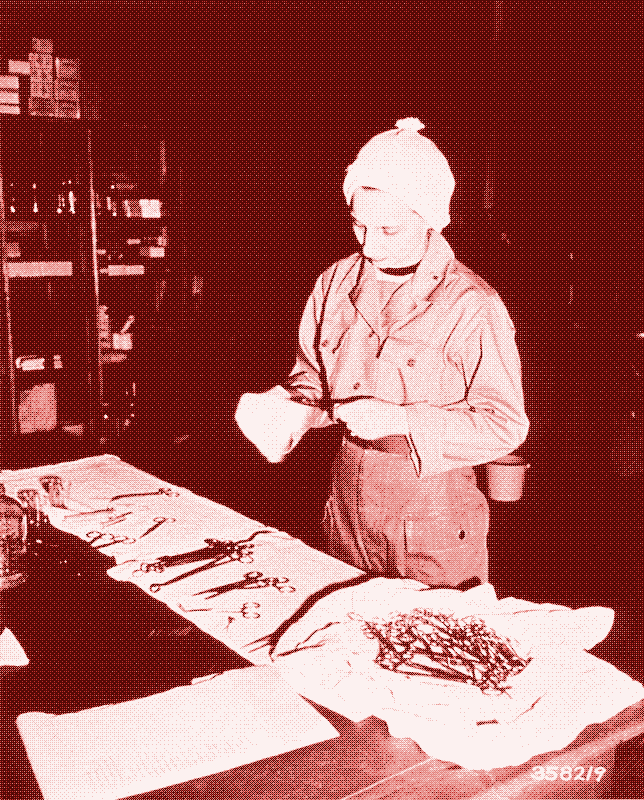
If properly decontaminated, reusable supplies carry no increased infection risks, but cross-contamination between patients sometimes happens by mistake. Nevertheless, some scientists have advocated for a return to reusable products, which have a much lower environmental footprint in most cases. For example, the use of reusable laryngoscope handles produces 16-25 times less greenhouse gases than single-use, disposable ones. 45. The researchers admit that their approach may increase deaths from surgical infections. Still, they argue that the health damage caused by the production of single-use disposable supplies is even more considerable.
Comparisons of cataract surgery in the UK and in India have shown that the same treatment produces only 5% of the emissions and 6% of the solid waste in the UK.
When it comes to maximizing returns, less affluent societies can teach us some lessons. Comparisons of cataract surgery in the UK and in India have shown that the same treatment (phacoemulsification) in India’s Aravind Eye Clinics is much cheaper and produces only 5% of the emissions and 6% of the solid waste in the UK. This is mainly because the Indian surgeons reuse as many supplies, devices, and drugs on as many patients as possible. 26 46 47 48 49 In addition, they use locally manufactured supplies, implants, and drugs, and they apply a dual-bed system in which one patient is operated while another one is being positioned and prepared in the bed next to it.
Although these practices flout regulations for infection control in high income countries, cataract surgery in India achieves similar or better outcomes and does not cause any more infections than it does in the UK or the US. Consequently, it may well be that the law of diminishing returns has reached its ultimate limit, in the sense that an expensive and unsustainable medical practice does not seem to bring any health benefits at all. The Indian eye clinics demonstrate that an effective model of care is possible without expensive and unsustainable supplies and resources. Medical innovation can happen without new technology.
Driven by profit
The law of diminishing returns and the focus on curative medicine are both rooted in the fact that medical innovation is primarily driven by profit. 50 51 Private companies who develop and sell medical equipment, pharmaceuticals, and other health care products have nothing to win or earn if the demand for new curative health care technologies and products declines, or if medical technologies were to be judged in relation to their resource use. The medical industry – logically – wants to increase the sales of its products, and has enormous marketing budgets and lobbying power at its disposal to achieve that goal. 52
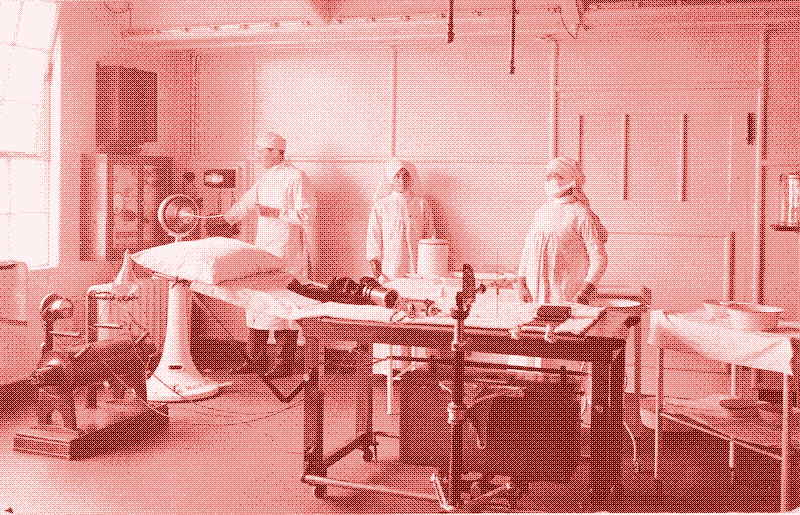
The WHO estimates that 20-40% of health care spending is wasted, and argues that “the cost-effectiveness, real need, and likely usefulness of many innovative technologies are questionable”. 44 37 An increasing body of academic literature shows the extent to which patients in high income countries are “overdosed, overtreated, and overdiagnosed”. 44 14
None of this is inevitable. A modern health care system could also work in another economic context. For example, some have suggested the open source development of medical equipment and pharmaceuticals, in which health care technology would become a commons. Shifting the tax burden from labour to resources could be another part of the solution. In high income countries, medical equipment, pharmaceuticals, and disposable products partly serve to reduce the expensive human labour force in health care.
Age and Sustainability
Based on the fragmented data available, it seems likely that the resource use of modern health care systems could be reduced significantly, without bringing us back to the barber-surgeons of the middle ages. A health care system that is more focused on preventive medicine, and which operates outside the logic of the market, could reduce emissions without negatively impacting health, maybe even improving it.
As medical treatments become increasingly resource-intensive, the chances grow that the public health damage of a treatment outweighs the individual gain of a patient, especially at old age.
Otherwise, the law of diminishing returns highlights opportunities to lower the environmental footprint of health care services. For example, if the environmental footprint of health care was halved, it’s very unlikely that life expectancy would decrease proportionally. Nearly half of lifetime health care expenditures – and thus energy use and emissions – is incurred during the senior years (+65 years old). For those up to age 85, more than one-third of their lifetime expenditures will accrue in the remaining years. 53
Advocating for a shorter average life expectancy, even if it may concern a very modest decrease, sounds problematic. However, avoiding the topic is just as problematic. Because of modern health care’s enormous (and still growing) environmental footprint, today’s health and longevity comes at least partly at the expense of the health and longevity of younger and future generations, who have no voice in this debate. 44
If we cure one person today, at the expense of making other people sick tomorrow, health care becomes counter-productive. Health is not only a private good but also a public one, and as medical treatments become increasingly resource-intensive, the chances grow that the public health damage of a treatment outweighs the individual gain of a patient, especially at old age.
Thanks to Elizabeth Shove
Reactions
To make a comment, please send an e-mail to solar (at) lowtechmagazine (dot) com. Your e-mail address is not used for other purposes, and will be deleted after the comment is published. If you don’t want your real name to be published, sign the e-mail with the name you want to appear.
Reactions
David Povey
Hi - great article on an important interesting topic. I’d like to defend the barber/surgeons though - the guilds were barbers and surgeons, but specialisation was the common practice. No surgeons would also be barbers - and very few barbers were surgeons. Access to sharp-edged blades was common to both skill-sets though, in a time when sharp edged tools were difficult to procure. Barbers would however, often do tooth pulling. I was recently reading of a Buddhist monk in Perth Australia who always extracts his own teeth - a serene sense of detachment required! Interestingly, a common anaesthetic was drumming and shouting - while some commentators believed it was to drown out the screams of the patient, its use in all circumstances suggests instead there was some other purpose - perhaps distraction for the patient. The drumming was not rhythmic but percussive.
James Simpson
A well-argued, useful and rare contribution to the solutions we need. As the authors point out, there is little or no debate about the impact of high-tech medicine on the climate and the natural world - it’s assumed to be vital and therefore immune from criticism. This has answered many of my own questions about how we can drastically reduce our energy use and our effects on the environment whilst still living healthy and satisfying lives. There are many more to be asked and answered, such as: sanitation systems in the wealthy nations are resource-intensive. Can we learn from how indigenous societies of the past and present deal with their waste products, or is our population density too great? If we reject oil as a resource, what will we construct medical equipment with, as plastics are an essential component?
The same applies to the glib, facile assertions I’ve read elsewhere claiming that we could all forage for food or return to a hunter-gatherer lifestyle but those societies practised severe forms of population control such as infanticide in order to be sustainable.
Kostas
Some extra or reiterating points you may want to consider for the problem of modern medicine:
https://onlinelibrary.wiley.com/doi/pdf/10.1111/ijcp.12509
This is a reflection of the general dominant social system attitude toward solving problems (e.g. putting people in jail for a ‘crime’, that need not exist under different social conditions).
https://www.ncbi.nlm.nih.gov/pmc/articles/PMC3442191/
https://pubmed.ncbi.nlm.nih.gov/24238959/
https://hub.jhu.edu/2016/05/03/medical-errors-third-leading-cause-of-death/
kris de decker
Hi Liam,
Indeed, we could radically go low-tech in all other sectors of society and keep the health care system as it is.
Still, even then, we would need to talk about limits. Because the problem is not only that energy use is high (5% of a lot is still a lot) but also that energy use keeps growing.
It’s not that the evolution of medical technology has come to a end in 2021. In another 20 years time, most of what we see now will be outdated again.
Liam Jones
As always, excellent and illuminating. I’ll have to send a while reading up on all those citations.
That said, while I agree with most of this, I find the focus of the final paragraph a little troubling. Given everything else mentioned in the article, is there any reason to suppose there’s a significant trade off between life expectancy now and living free of climate disaster in the future?
Going by the first citation, and putting aside the US as an outlier, it seems we can get a “modern” and “developed” healthcare system with a healthcare carbon footprint (compared to national) of around 5%. That suggests that before looking at healthcare, there’s 95% of carbon emissions we can hew away before doing anything that impacts health care.
If we compound that with the preventative measures that come with living in a low energy society (more exercise, less processed food, lower levels of environmental toxins, and less stress), and savings that come with safe equipment re-use, the final footprint could be quite a bit smaller than that. That seems to me a low enough figure that renewables could take the burden (and to the degree that it can’t, the carbon emissions thereof would be more manageable).
Or, in other words, diminishing returns also apply on the carbon savings end: we can get most of the carbon savings without reducing anyone’s lifespan.
Conversations with fellow XR protesters once spurred me to observe that if we have to reduce high-tech consumption, I’d rather give up smartphones, video games and televisions so I can keep MRI machines.
That’s a rather more verbose criticism than I intended. I’ve also got a few things you might find interesting:
Chemical sanitation in hospitals does little to stop re-contamination and may select for resistant strains. Using probiotic bacteria may be better than sterilisation:
https://www.ncbi.nlm.nih.gov/pmc/articles/PMC5609343/
and
https://journals.sagepub.com/doi/abs/10.1177/0040517517741163
Babies born at home have a more diverse, beneficial microbiome:
https://www.sciencedaily.com/releases/2018/10/181031080557.htm
And Szreter’s piece on the importance of public health rather than economic growth as driving Britain’s mortality decline between 1850 and 1914:
https://academic.oup.com/shm/article-abstract/1/1/1/1663150?redirectedFrom=fulltext
Gaia Baracetti
Very interesting, thank you, many very good points.
Our society is obsessed with measuring things, with giving a number to everything. While this is often useful, it can also be an impediment to seeing things for what they are. Life expectancy, for example: in the rich world, we KNOW that the last few years of a very long life are mostly very low quality, plagued by disease, limited mobility and independence, pain… but we congratulate ourselves on having achieved such high life expectancy. Now, in Italy, we are watching the grotesque example of vaccinations to triumphant-looking 100-year olds, who will probably die soon anyway, while younger people, who’ve had less of a chance at life, go unvaccinated and untreated for most things that aren’t Covid (and sometimes for Covid too).
I’ve observed that there are a lot of instances of very old people that are ready to die, that it would be more charitable and respectful (and environmentally friendly…) to accompany to their natural end, but who keep receiving stressful and invasive treatments because the doctors don’t want to be sued and the relatives are terrified of mourning.
Let’s talk about this. Death is natural. Quantity is not always superior to quality. Even if we lost a couple years on average of extreme old age, but the rest of our life became better (less work to support this system and more free time, less environmental damage, less age-based inequality) for it, I’d take it. And I suspect a lot of people would too.
Susan B Green
I would like to add another source of unsustainable pollution and waste to the list in this article; the un-monitored waste and pollution in pre-clinical research. Whilst peer-reviewing a paper on the Toyota laboratory animal cage-washing system at the Seattle Childrens Hospital I learnt that there are large volumes of water involved in this procedure which is extensive with hundreds of cages per day going through it. I asked the authors of the paper where the water went and was shocked to learn that it went down the drain and into the local municipal waste facility. There is also the waste produced from the incineration of the ‘sacrificed’ animals, blood, tissue and the soiled bedding. Not to mention the sterilisation proceedures of the large inventory of laboratory equipment used.
Joseph
Great article! Thanks for another good one Kris. I had no idea about any of this.
I’d also be very interested in learning about the impact of the buzzier or newer high-tech healthcare, stuff like genome sequencing, telemedicine, remote/robotic surgery, wearables and frequent diagnostics, brain modelling, brain interfaces, etc.
jr23
ussr the dr who developed radial keratotomy did surgery on assembly line. all in row going from patient to patient same scalpel no gloves or wash between. but never saw data on infection rate
and hospitals did not have a/c so windows open noise restrictions only helped so much. and cases of infections from not properly sterilized endo scopes was found sometimes barely whipped and still doctors caught using needles over and over even with spinal injections. and do we really want to go back to exploratory surgery instead of ct and mri. and even without anesthesiology or pain meds. and reusing requires labor and skilled at that costly. yes we can do better but not by going backwards
Jonathan Fuchs
I think this Australian Professor raises some interesting points.
15 minute version: https://www.youtube.com/watch?v=jF3d059QBkM
1 hour 7 minute version: https://www.youtube.com/watch?v=IzueFu1cq5U
Not all surgical procedures performed are necessary.
Oftentimes surgical procedures are more risk than they are worth. Especially in geriatric patients, the sedation and the wound inflicted by the surgery are a higher risk than any improvement that is to be expected from surgery.
Most surgical procedures have not been verified in Placebo controlled studies.
When Placebo controlled studies are performed they often show no improvement over the control group or even show better improvements in the control group.
To determine which surgical procedures are worth the risk we need more Placebo controlled studies.
A point I want to raise myself: If the initially reported improvement from surgeries comes from the Placebo-Effect and the control group noticed an improvement as well, then we need ways to harness this, for example with cheap mock surgeries.
But the most important takeaway from this is: This seems like a problem. We need to modify the criteria for studies in this field of research, we need to allocate funds to redo faulty studies and to verify existing research and we need to be willing to let our health-care-policy be influenced by these studies.
Darin Wick
Might also be worth looking into the (former) hospital at Las Gaviotas, Colombia. I believe it operated off-grid, largely thanks to custom-built solar energy systems. I doubt they were doing MRIs, but even a hospital that has all the modern high-tech and high-energy equipment could still use lower-tech systems where appropriate.
A bit about Las Gaviotas: https://en.wikipedia.org/wiki/Gaviotas
I believe there’s more info about the hospital in the book “Gaviotas: A Village to Reinvent the World” by Alan Weisman.
My partner says Cuba’s medical system could also be a good resource - strong focus on preventative & simple approaches to health.
Lucas
This was a massively interesting article! It had me thinking about the carbon emissions of a sector I hadn’t even thought about before and allowed me to appreciate the full implications of massively reducing emissions. It seemed, if nothing else, massively ahead of it’s time though, and I think that wasn’t something reflected in the writing. It seems rather silly to be seriously arguing for compromising health care results in order to reduce carbon emissions for a long term advantage, while we are at the same time releasing an unimaginable amount of carbon for no gain in cryptocurrency mining, unnecessarily relying on personal automobiles etc. Perhaps it would have been better framed as ’the next big thing to consider'?
Spice
This article touches on some concerns I’ve had about the sustainability of high-tech health care. My own place of concern came regarding the intensive use of petroleum products, but you’ve shown that it goes beyond that. It’s truly concerning, and the lack of numbers even more so.
When discussing what aspects of health care to keep and which to potentially jettison, I do think it’s important to query the people most affected by them. If one is young, it’s easy to say that the elderly should be glad to sacrifice their supposedly lower quality lives so young people can live. But will we feel the same way when it’s our turn?
Additionally, disabled people have complicated relationships with the medical system. Is it possible to rein in spending on the medical system without hurting disabled people or taking away things that give them freedom? Should they be prioritized over different sorts of spending, then? How can we avoid sliding into eugenicist thinking when decreasing spending on medical care?
Lots of difficult questions that don’t have easy answers. But it’s important to ask them and think about them. Thanks for covering this.
Spice
Katherine
I’m afraid I can’t be as positive as Spice in the face of eugenics. I was fascinated and delighted to find a website that runs on solar and talks about things like alternative solar power technology. But it turns out a sustainable future isn’t for me or people like me. Disabled and chronically ill people, which does include elderly people but not exclusively, will be disproportionately affected by any policy that reduces energy intensive healthcare and focuses on prevention. It’s rather convenient to think about the burden only falling on old folks a few years from the end of their lives, but no. This would also include children and many adults in their prime.
As people often deemed undesirable, now and in the past, this isn’t new. Americans at the turn of the last century were keen to make the human race “better” by breeding out disability and sterilizing people, while the Nazis took a page from their book and decided to murder us instead.
Much more recently, disabled people were denied care during COVID surges, given “Do Not Resuscitate” without their knowledge, or threatened with having their personal ventilators removed to be given to “healthier” patients. And as companies moved away from disposable plastic straws, the disabled people who need straws to drink and for whom alternatives don’t work were shouted down by environmentalists for murdering turtles.
So this isn’t new or groundbreaking stuff. The reasons might be different (“purity,” healthcare costs, healthcare scarcity, environmentalism), but the end result is the same. Disabled and chronically ill people will suffer and die disproportionately, and we’ll be acceptable losses… because our deaths will make the world a “better” place. And afterwards, people will assuage their conscience with the baseless claim that our lives — filled with pain, yes, but also love and joy — weren’t worth living in the first place.